The United States has some of the biggest lakes worldwide, but what about Alaska? While Alaska doesn’t have the biggest lakes in the country, it does have the most. The state has nearly 3 million lakes inside its territory, including natural lakes, creeks, and ponds.
So, why would we argue that Alaska has the absolute best likes in the country? Well, you’ll just have to find out by reading down below!
#1: Fishing Opportunities
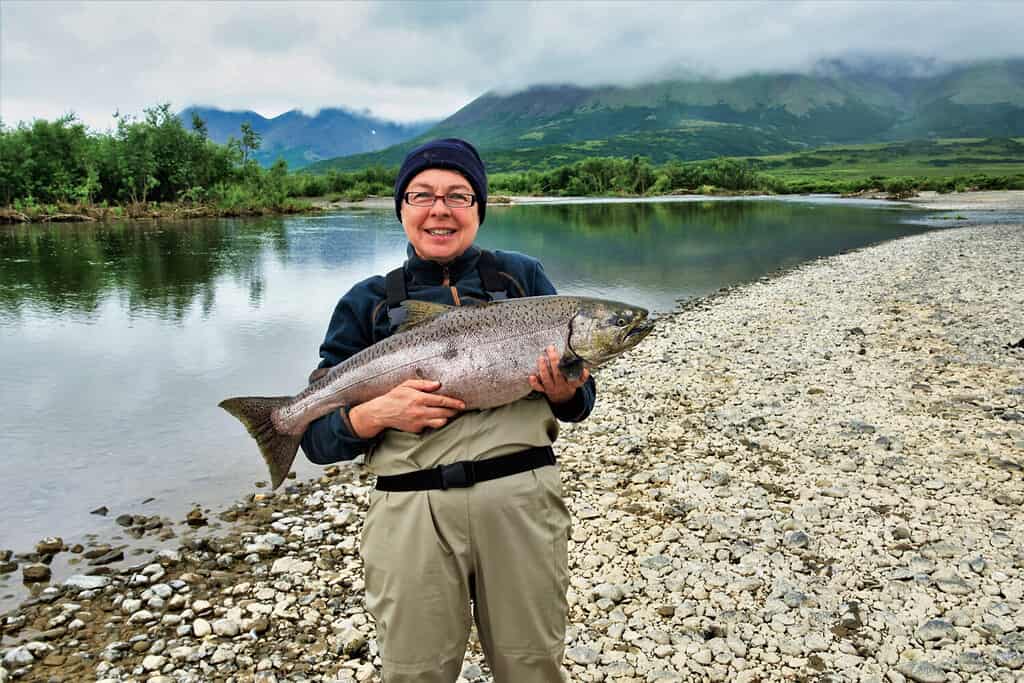
Many anglers travel specifically to Alaska for its fishing scene.
©FarFlungFotos/Shutterstock.com
Alaska is any angler’s dream, as it has a handful of fish unique to the state. Many anglers come here to catch and enjoy the many types of salmon that roam the waters from May to September. But why is the fishing so great for lakes in Alaska?
Aside from your classic salmon species, the state includes various cold-water fish species. This includes rainbow trout, arctic char, Dolly Varden, and graylings. In addition to that, Alaska has designated fishing areas that are abundant, so you’ll never have to worry about spots not having enough fish.
In addition to that, Alaska has over 800 marked fishing spots. This ensures that those looking to fish have plenty of variety and choice on where to go. Depending on the region, the lakes also have different species. Some of the most popular lakes to fish at in Alaska include Jewel Lake, Birch Lake, and Matanuska Lake.
#2: Recreational Activities

Whether visitors want to boat, waterski, or hike, there are plenty of outdoor activities to do lakeside.
©Danita Delimont/Shutterstock.com
Alaska’s lakes provide a wide variety of outdoor recreational activities. Since the state has lakes throughout each region, there are plenty of activities to do year-round. Any outdoor enthusiasts will be ecstatic at not only the many outdoor recreations to choose from but also the surrounding beauty of Alaska.
During the summer, Alaska has the best lake-based activities. One of the most popular is kayaking and canoeing. The state’s many lakes range from beginner-friendly to expert-level. Visitors can even wakeboard, surf, and water ski in specific locations. Another frequent activity includes boating.
During winter months, the lakes can still be used for recreational fun. If the lake is in a town or city, it is often used as an ice skating rink. Many residents will have someone smooth out the ice so it can be safe to skate. Another exciting activity is ice fishing, which allows a person to drill a hole in the ice and fish for fish in unfrozen lake water.
While not official activities, you can find Alaskans using their snowmobiles to zoom across the ice. Others also ski across or pull sleds as they can slide easily across. Although exciting, being on top of lakes during winter is not recommended unless the government approves the site.
#3: Natural Beauty
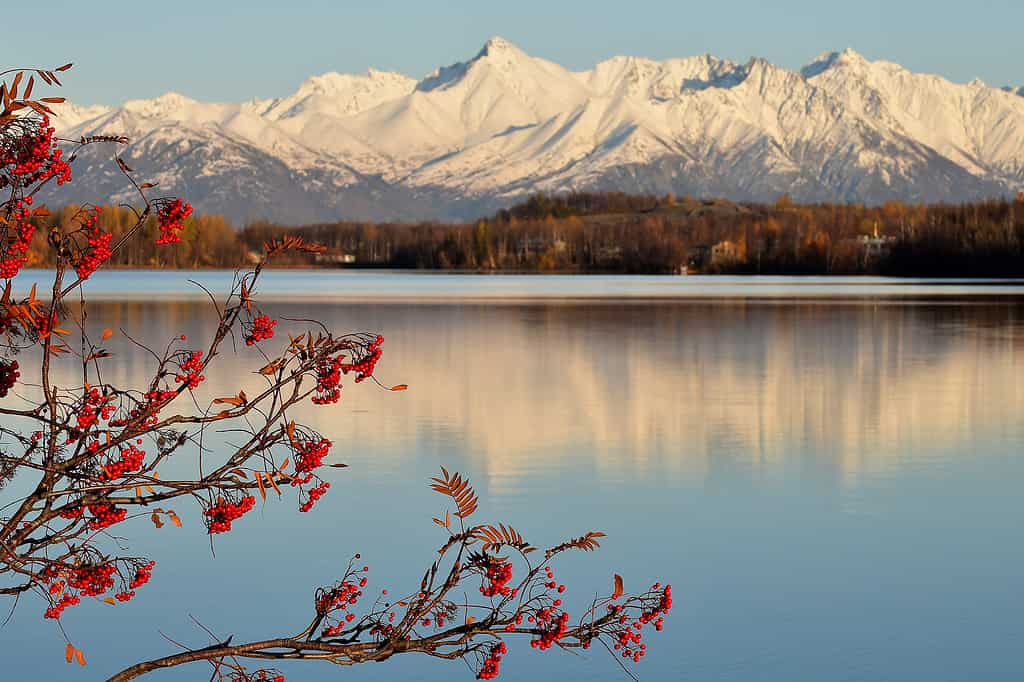
The state of Alaska has the most stunning views, no matter what region you’re in.
©JT Fisherman/Shutterstock.com
Outdoor enthusiasts favor Alaska because the state is beautiful and has the best lakes in the country. No matter the time of year, the lakeside views are amazing. During the summers, Alaska’s lakes are surrounded by vibrant flora. Animals can be seen using the lakes as water sources, and plants thrive.
The summers are stunning and are the best time of year to enjoy lakeside activities. There are many recreations, but the surrounding views make it the most amazing. Alaska is very mountainous, and lakes often have mountains on every side. Also, the Alaska government controls many conservations and reserves, ensuring that the state of the land stays clean and protected.
During fall, reddish and orange leaves can be seen floating around. Plants are starting to turn color as the fall transitions from fall to winter. During this time, lakes are often very calm and tranquil.
While most people wouldn’t think lakes are beautiful in winter, Alaska is the exception. The snowfall and cold temperatures transform the lakes into a winter wonderland. The waters freeze over, while the snow adds a sprinkle of Christmas. Also, many lakes in the city have become decorated and a center for outdoor recreation.
#4: Size and Diversity
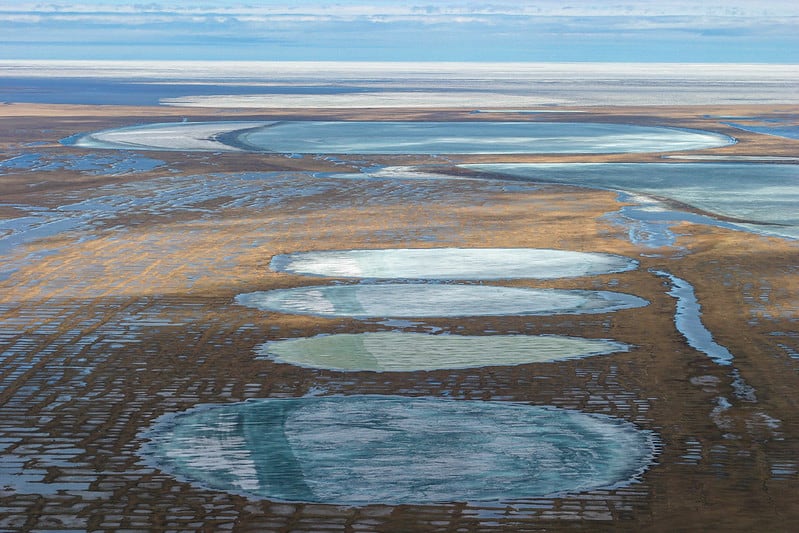
Lakes in Alaska come in every size and shape you can imagine.
©Bureau of Land Management Alaska / flickr – Original / License
Another reason Alaska has the absolute best lakes in the country is its size and diversity. Since the state spans over 650,000 square miles and has five distinctive regions, there is plenty of diversity.
Alaska has more than 3 million unnamed natural lakes and 3,197 named ones. In addition to that, there are 67 named artificial reservoirs and 167 dams. Some of the smallest lakes are less than a mile in square miles, while others are over 1,000. The largest lake in Alaska is Iliamna Lake, which spans 1,012.5 square miles and is situated between Kvichak Bay and Cook Inlet.
Aside from that, not all lakes in Alaska were created the same. Many of Alaska’s lakes were formed due to glaciers. The ice sheets melted over thousands of years, which caused their ice to move features off the ground’s surface. Then, the streams and rivers would dissipate over time. This left lakes with vast amounts of water with no hydrologic networks, thus creating a new natural lake. Some notable glacier lakes include Mendenhall Lake, Symphony Lake, Delaney Lake, and even Togiak Lake.
While the state has many natural lakes, there are also a handful of artificially made ones. There are estimated to be around 67 artificial reservoirs in the state. The most notable being Chena Lake, located in North Pole, AK, and then Eklutna Lake.
#5: Water Quality

The Alaskan government closely monitors water quality levels to ensure that they stay naturally safe.
©Wildnerdpix/Shutterstock.com
One unique fact about Alaska is that it has some of the best water quality in the United States. With so many glaciers, the water that runs down many streams is clean and pristine. In fact, the clearest lake in Alaska is Lake Clark. Its water looks like a scene out of a fairytale, as it’s blue and reflective.
Remember how we touched on lakes being formed by glaciers? Alaska’s lakes formed by glaciers have some of the purest water. Some companies even bottle the water and sell it for a premium price. The water that melts from a glacier is pure from bacteria, pollutants, and contaminants in other water sources.
Besides that, Alaska’s government takes extra precautions to ensure the water quality is good in all their official lakes. The Southwest Alaska Network helps monitor lake water quality to ensure they have no contaminants. They also measure the temperature, pH, dissolved oxygen, and conductivity.
The Alaska Department of Environmental Conservation Division of Water also monitors and logs Alaska’s water quality across the state. You can view current monitored lakes and streams across the state if you click here.
#6: Biodiversity

From Salmon to Grizzly bears, Alaska has plenty of biodiversity around the lakes.
©iStock.com/John Pennell
The biodiversity in Alaska’s greatest lakes is vast. With each region unique, Alaska’s aquatic ecosystems have a wide variety of wildlife. In addition, Alaska also has plenty of mammals and flora living around its beautiful lakes.
Many of Alaska’s lakes are filled with many different fish species. However, the most notable are the five species of Salmon, three trout types, and even other kinds of fish. Graylings, northern pike, and even Arctic chars can be found in some areas. Other fish that can be found are salmon sharks, sturgeons, and sculpins can also be found.
Aside from aquatic animals, Alaska has dangerous river and lake animals. Grizzly bears frequent lakes as a water source in many areas. Other animals like moose, wolves, and caribou can also frequent lakes.
#7: Scenic Trails and Parks Around Lakes
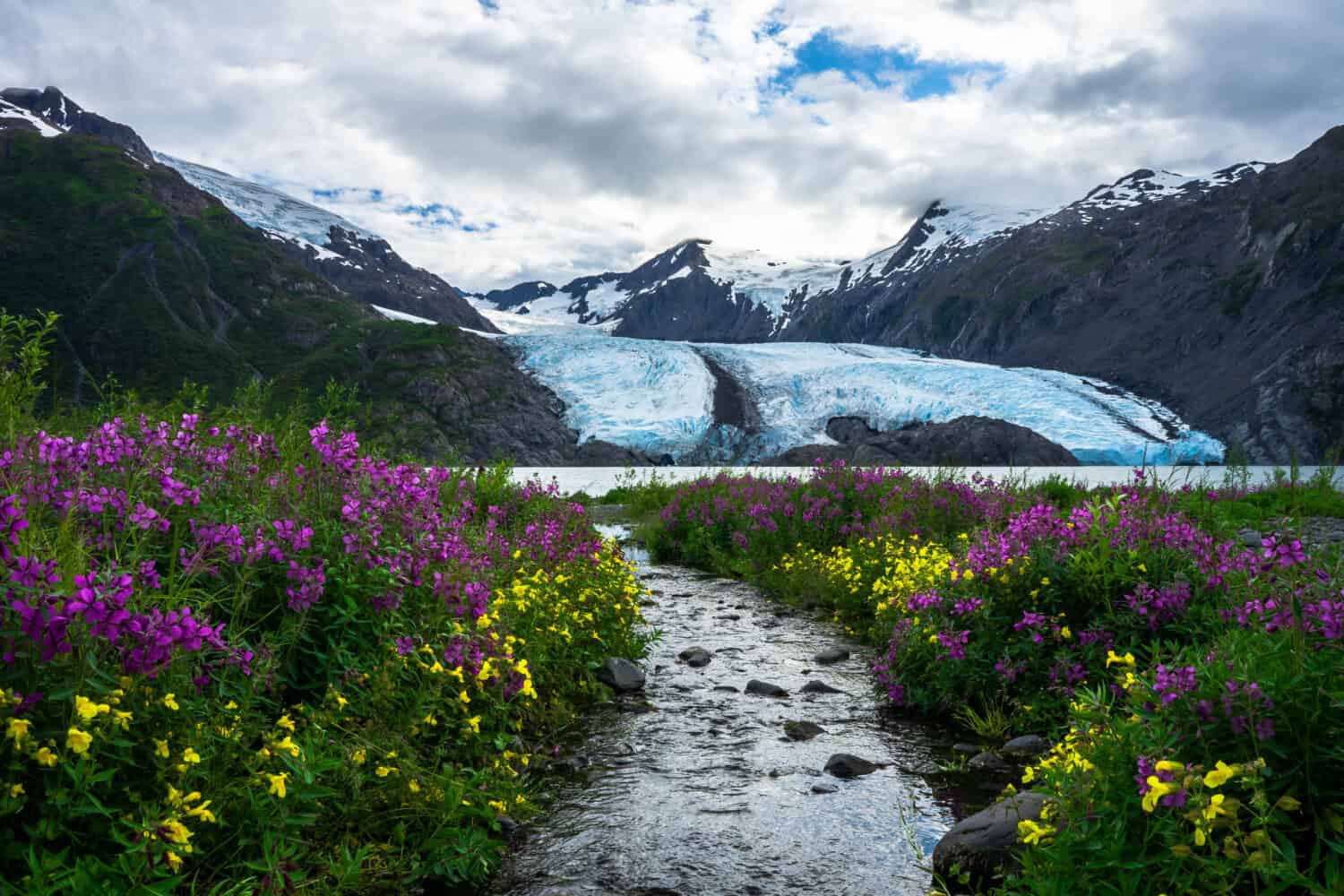
Hiking is one of Alaska’s main attractions, and lakeside trails are a favorite of many.
©Mariia Suvorova/Shutterstock.com
If you’re looking for more reasons why Alaska has the absolute best lakes in the country, consider the state’s many scenic trails and parks. Alaska’s lakes are natural wonders and are a fantastic place to sightsee. The Alaskan people know this; thus, the state has created many trails and parks alongside them. People can embrace Alaska’s scenic trails and parks while overlooking the lakes.
Lakeside trails can be found all over the state and can be accessed year-round. However, the summer and fall months are often favored as the trails are easier to tread. During winter, they tend to become slippery, and the lakes are frozen over.
The Horseshoe Lake Trail is famous for beginners who want a more scenic walk. However, hiking enthusiasts will enjoy Portage Pass Trail, which is favored for its hike and its migratory route for birds. Lastly, Harding Icefield Trail is excellent for a challenging trek due to its steep trails and 9.2-mile round trip length.
#8: Accessibility and Amenities
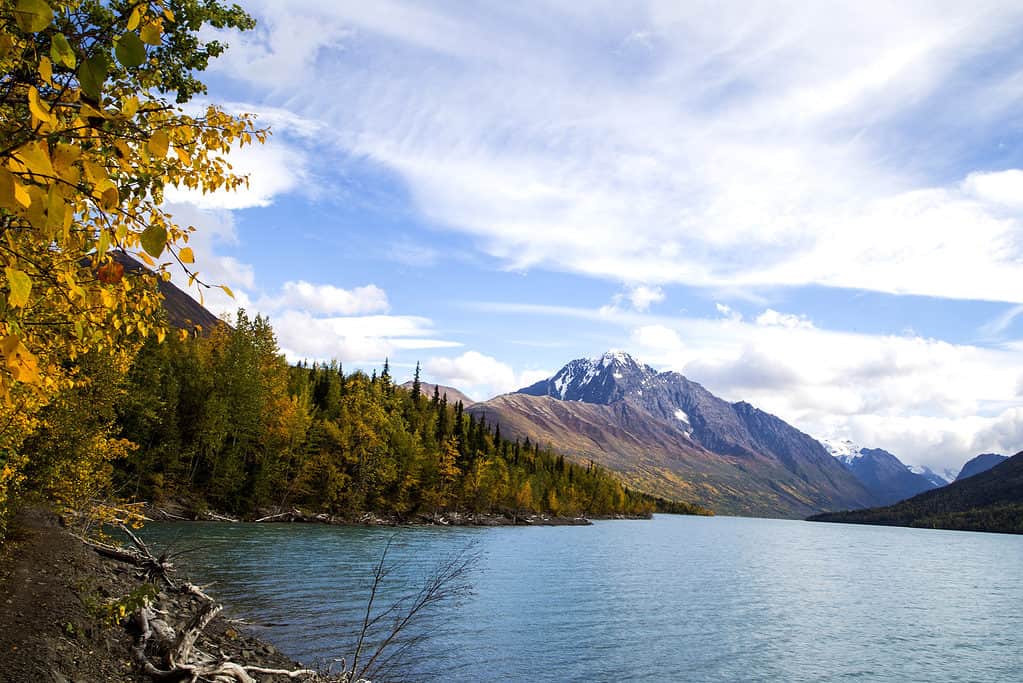
Whether camping or dining, you can find many lakeside attractions year-round.
©iStock.com/Ashley Snyder
Another reason to love Alaska’s lakes is the lakeside amenities and accessibility. Ever feel like resting and overlooking the beautiful, serene ambiance of a lake? Alaska has plenty of lakeside amenities ranging from campsites, lodges, and parks.
For campsites, popular choices include the Eklutna Lake Campground, Byers Lake Campground, and the Hidden Lake Campground. Campgrounds have limitations on what season visitors can stay, but they are well worth planning a trip to. Whether you want one closer to the city or a rural location, plenty of choices exist.
In addition to campsites, Alaska has multiple lodges and resorts ranging from luxury to budget. Want to visit a lake and have fine dining? Alaska can provide that for you. What about lakeside lodging for an affordable price? Alaska has lodges located throughout the state.
Private and publicly owned lakes have plenty of accommodations for accessibility. Some places include Rock Lake, Sitka National Historical Park, and Denali National Park and Preserve.
#9: Cultural and Historical Significance

Alaska’s lakes have been around for ages and play an important role in the heritage of some Native Alaskan clans.
©iStock.com/RONSAN4D
Lastly, Alaska’s lakes have deep cultural and historical significance for native Alaskan tribes. Within each region of Alaska, there are Alaskan native tribes with deep cultural heritages. There are 231 federally recognized tribes, many of whom cherish Alaska’s nature, including lakes.
Historically, Alaska native tribes have lived near lakes for centuries as it has been a pivotal area for survival and travel. Healy Lake was home to the Athabascans, who lived alongside the five-mile body of water. Here, the tribe used the water as hunting grounds and a place to give thanks to the earth.
In addition, many Alaska native tribes have made entire tribes centered around lakes. For example, the Healy Lake Village, Mendas Cha’ag, is an Alaskan Native tribe whose title translates to “body of water, with an outlet,” according to the Tanacross Athabascan language.
The photo featured at the top of this post is © iStock.com/MorningDewPhotography
Thank you for reading! Have some feedback for us? Contact the AZ Animals editorial team.







